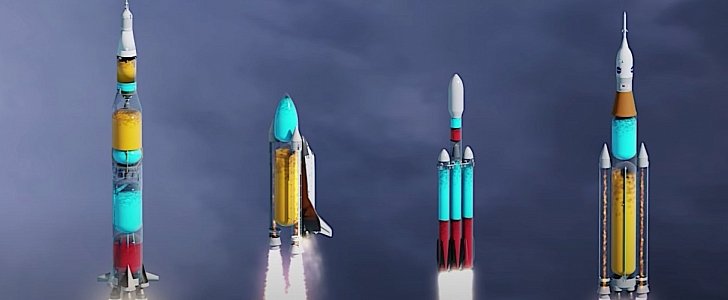Ever since the end of the 1950s and the early 1960, we’ve been bombarded with images of rockets, big or small, taking off from launch pads all across the planet. After all, we are living in the space age, and there’s probably no one alive who doesn’t know what a rocket is and does.
In the U.S. alone, since crewed space flight became possible, NASA has launched over 200 missions with humans on board. Countless others, probably in the thousands, have taken various loads to orbit for government and private entities.
So, we all know what happens when a rocket takes off: fuel is ignited and burned, generating in the process enough thrust to allow the rocket to defeat Earth’s gravity and reaching its goal.
Now, beating gravity is not an easy task, and to manage the feat, a lot of fuel needs to be placed on board. So much, in fact, that most of an average rocket’s body is made of fuel tanks, and just the little tiny tip is the actual spacecraft.
Several types of fuel used by rockets, depending on a variety of factors, including rocket stages. There are usually divided in two categories, solid and liquid propellants, and can be used either separately or combine in the same rocket: the Saturn V, for instance, the rocket that helped take humans to the Moon, mostly used liquid fuel, but it did have solid propellant in the upper stages.
Now, thanks to a video created by Hazegrayart, we can see just how fast fuel is drained from the tanks. We are not being told what calculations were used to render this, so we have no way of knowing if the images are accurate, but they sure are spectacular.
The rockets depicted in the video are the (left to right) Saturn V, the Space Shuttle launcher, the Falcon Heavy and NASA’s upcoming Space Launch System (SLS). Inside these rockets, the color coded fuels are as follows: red is RP-1 (kerosene), orange is LH2 (liquid hydrogen), and blue LOX (liquid oxygen).
So, we all know what happens when a rocket takes off: fuel is ignited and burned, generating in the process enough thrust to allow the rocket to defeat Earth’s gravity and reaching its goal.
Now, beating gravity is not an easy task, and to manage the feat, a lot of fuel needs to be placed on board. So much, in fact, that most of an average rocket’s body is made of fuel tanks, and just the little tiny tip is the actual spacecraft.
Several types of fuel used by rockets, depending on a variety of factors, including rocket stages. There are usually divided in two categories, solid and liquid propellants, and can be used either separately or combine in the same rocket: the Saturn V, for instance, the rocket that helped take humans to the Moon, mostly used liquid fuel, but it did have solid propellant in the upper stages.
Now, thanks to a video created by Hazegrayart, we can see just how fast fuel is drained from the tanks. We are not being told what calculations were used to render this, so we have no way of knowing if the images are accurate, but they sure are spectacular.
The rockets depicted in the video are the (left to right) Saturn V, the Space Shuttle launcher, the Falcon Heavy and NASA’s upcoming Space Launch System (SLS). Inside these rockets, the color coded fuels are as follows: red is RP-1 (kerosene), orange is LH2 (liquid hydrogen), and blue LOX (liquid oxygen).






